3 UltraSummits Tihio Race – How to Truly Enjoy the Mountains
May 27, 2025. Tihio, Greece. 250 kilometers in the Greek mountains, 14,000 meters of elevation gain, and an 80-hour time limit with ascents of three 2,500-meter peaks. All of this for a group of about 40 trail enthusiasts and lovers of pain. This is the Tihio Race.
My blog seems to have frozen in time since my last post. Exactly six months have passed since the epic journey from Athens to Sparta and back. Recovery, both physical and mental, from Phidippides took me longer than I thought. And so, before setting off on my next adventure, the only thing I had time for was a “training” backyard in Holešov, where I repeated my 36 yards (and 250 km) from the previous year. Almost zero altitude training promised intense fun. And this assumption was fulfilled to the fullest. So let’s get to it.
It’s a week before the race. I bought my plane ticket a month ago, but that’s about all I’ve done so far to ensure the success of the project. I haven’t even read the description of the route and the whole event yet. My punk preparation is reaching new heights. Ever since December, when I confirmed my participation, I’ve been living with the idea that it will be a kind of “double B7” (local trail race in Czech Republic), no big deal. But I don’t want to go completely blind, so I’m finally getting acquainted with the details. And as expected, my idea couldn’t be further from reality. I read about the difficult terrain, climbing rocks, fording rivers. The feeling that this won’t be a double B7 is starting to creep into my head.
It’s not until the day before departure that I pack my gear and buy provisions. It takes me much longer than usual. Somehow, I can’t seem to finish packing, even though I only have one small suitcase, a carry-on bag, and a backpack. It’s a good thing that the Greek mountains don’t promise any frost at the end of May, because otherwise I don’t know how I would fit into my luggage. I haven’t even worn my new Saucony trail shoes yet, which is great – exactly what you shouldn’t do. Oh well, I’ll run them in during the day, on the way to the venue. Although such preparation and testing of shoes seems a bit dubious to me. I’ll run in my usual Kilpi Hosio pants with the legs unzipped, my usual “national team” T-shirt, and I’ll put a Hurricane membrane jacket (it’s mandatory equipment anyway) and a Ninja in my backpack (Kilpi Cadence 20) just to be on the safe side. There’s still room for my usual first aid kit, a large power bank, and a few other bits and pieces. When I pack my backpack to test it out, I realize that I haven’t left any room for food. So some of the bits and pieces go back into the box…
My son drives me to Vienna Airport after midnight. The flight leaves at 6 a.m., and I have to wait at the airport for the fourth time. At this ungodly hour, the lounges are closed, so I sit at the gate and kill time on my phone. There’s no pre-flight beer at the airport, but I plan to make up for that when I arrive at my destination. The flight goes smoothly. I land in Athens after 10 a.m. I have a rental car booked, it’s outside the airport, and someone is supposed to be waiting for me at exit 5. And of course, they’re not waiting. After fifteen minutes of waiting in vain, I call the rental company, and half an hour later, after completing the paperwork, I’m sitting in my Opel Corsa and driving away from Athens towards Tihio. It’s a little less than a three-hour drive. The monotonous highway driving is regularly broken up by toll gates. The weather is beautiful, and after a while, the highway starts to run along the coast of the Gulf of Corinth, offering very nice views. In the distance, a large bridge over the end of the gulf appears, and my destination is just a few kilometers beyond it. So far, I’ve paid about fifteen euros in tolls, which is bearable, but when they ask me for 15 euros to cross the bridge, I’m downright annoyed.

I park at my accommodation—a nice little house right on the beach (private), with a beautiful room. The first thing I do is put a pack (6 cans) of Pilsner in the fridge – because I intend to reward myself for the move with one or two cans of the golden nectar.
After half an hour in the freezer, the beer is cold, I drink it and fall asleep. I don’t even set my alarm, even though I have to pack and prepare for the race in the evening. I wake up after 9 p.m., put instant noodles in hot water, and with the second piece open, I prepare everything for the race. I go to sleep after midnight. Checkout is at 11:30 a.m., so I have plenty of time to sleep.
The morning is picture perfect. The sun is shining, I sit on the terrace in front of the room and watch the sea.

Then I at least wet my feet, as I don’t feel like swimming. The start itself is at 8 p.m., so I have eight hours free after checking out of my room. I decide to go on a tour of the start in the mountains, even though it’s a half-hour drive up a steep hill. There is already a lot of activity in the start and finish area. I look around, but I don’t want to spend the next seven hours here, so I head back to the sea to replenish my nutrients with a suitable meal at a local restaurant. And indeed, spaghetti with seafood and Greek salad are the right foundation. In the morning, I have already taken Imodium as a preventive measure against any intestinal pressure. The weather has been merciful so far, but my peaceful meal by the sea is now turning into a storm with a nice rain shower. I pray that the race won’t be completely wet. I run to the car and head back to the start. I spend three hours at the site preparing and lying in the car. The technical briefing is amusing, with a 45-minute monologue for the Greek participants followed by a ten-minute speech in English for the rest of us who don’t speak Greek – there are three of us in total. No need for BS talk anyway…
The briefing ends after seven, and it’s just about time to get dressed. But first, I prepare my poles – I extend one, okay, I extend the other, and it collapses again. The spring that holds it in the extended position has jammed, and the pin has remained inside the pole. After a few futile attempts, I pull out a safety pin and get the pin out. It’s clear to me that there will be no folding of poles during the race – with such an elevation gain, I can’t imagine being without them. I call home, get dressed, properly lubricate the necessary areas with Vaseline, and notice that there are 10 minutes left until the start. I move about 100 meters from the parking lot to the start. A pre-start photo, starting the route in Garmin, and the countdown begins. I don’t even have time to be nervous.
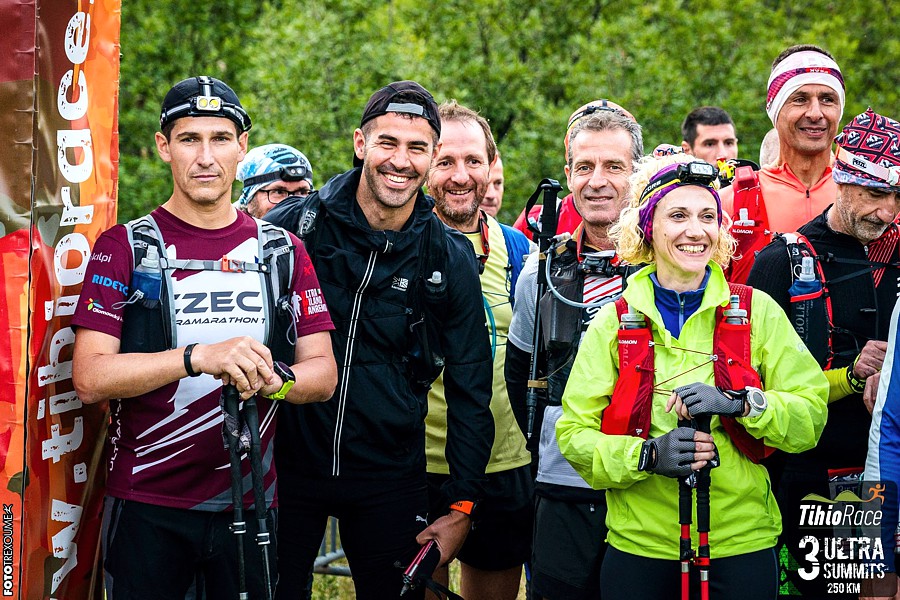
The weather has improved, and the whole group sets off and heads down the asphalt. After a kilometer, I relieve myself and, seeing that no one is behind me, I guess I’m at the back of the pack. If this were ten years ago, I would sprint to the front, but not anymore. I calmly set a pace of six to seven minutes per kilometer as the asphalt goes up and down. The backpack on my back isn’t heavy, but compared to training, it’s a foreign element. When I realize that I’ll be carrying it for maybe eighty hours, my back starts to hurt preventively.
I have two soft flasks for drinking, but only one is full right now. With the exception of the “peak” sections (let’s not forget that we are moving at an altitude of 100 to 2,500 meters), there are plenty of opportunities to drink, so there is no need to add another 700 grams to the load unnecessarily. My pleasant jog is interrupted by a turn into the terrain. It’s nothing major, but with the light fading, you have to watch your step.
And then, just as the light fades, I come to the first mountain river, or rather a stream. Without thinking, I step on a rock in the middle, shift my weight to my other foot—and whoops, my foot slips and I sit down in the water to the sweet sounds of cursing. My shorts, shoes, and socks are soaked, half of my backpack is too, and I hear a concerned “are you okay?” behind me, but I can feel that malicious smile on my back. Vaseline mixed with cold water is just the thing for a wolf (as we call the burning sensation in the ass in Czech language), welcome to the trail…
I console myself with the fact that Hosio pants dry very quickly, and I would have sweated through my T-shirt anyway, as well as my backpack. The road and cross-country alternate, and the kilometers fly by. I reach the first checkpoint at 26 kilometers in 3:45. That’s a very slow half, but on the other hand, I have 1 kilometer of elevation behind me and another thirteen ahead of me, so I’m not stressing about the time. The refreshment station is in the village square with a church, very nice. I refill my water, do my first live broadcast, and call home. I eat something and move on.
It’s nighttime, of course. The route leads through easier terrain, interspersed with more challenging sections. I’m doing pretty well, trying to jog along. At the 39th kilometer, there is supposed to be a ford where I have to wade knee-deep in water. We were given plastic bags for this purpose, so that we wouldn’t get our shoes wet. I team up with a few other runners who run ahead of me a little before the ford. When I reach the shore, I see everyone busily putting on their bags. I think to myself, “This isn’t some park run to keep my feet dry, it’s a trail, right?” And since my shoes are still wet from my previous swim, I jump into the river with a loud “fuck it” and wade across. At least I don’t look like a sugar doll. It is a complex of streams and smaller rivers submerged in darkness, and small flags help with navigation, as do the lights of a car and a volunteer at the end. That’s good, because wet shoes are bad, but mud inside would be even worse. The reward for overcoming the torrent is a five-kilometer climb with a thousand meters of elevation gain.
I can feel that morning is approaching. I have been walking with my colleague from France for some time now. Along a mountain path, passable, winding. Ten kilometers with an elevation gain of around nine hundred meters leads us high into the mountains. Dawn is breaking and majestic peaks are appearing around us. I take a few photos because it’s worth it. Here and there, the path descends, and I jog to test how my legs are doing. And they’re doing well. They’re running.
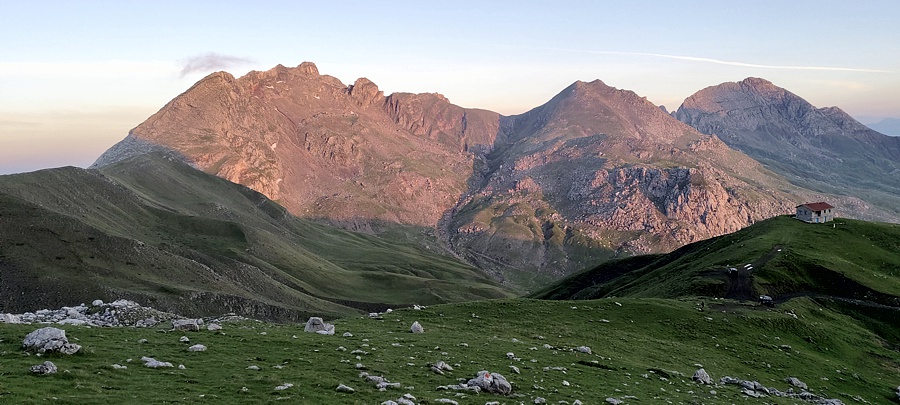
At the 57th kilometer, the so-called “out and back” begins—a detour from the route, an ascent to the first peak, and a return to the route. Three kilometers there, three back. However, when I see the steep climb where the trail is heading, I tap my forehead with my finger along with the Frenchman. Damn, really? A brutal climb awaits us, first in the terrain, then on the rocks. I feel like I’m on Everest, ten steps, breathe, and so on. At the top, there is a climbing bonus. But before that, we have to cross a small snowfield. I look down and wonder what would happen if someone fell down – well, what else, they’d be done for. My heart is in my boots, it’s really dangerous. And when I cross the edge, a plateau appears, but at its end is the second phase of climbing—luckily, it’s not that long. I climb up the rock, panting like a locomotive, leaving poles below the summit because it’s simply impossible to climb with them. When I sit down at the top, I tell myself that it’s a well-deserved view and a summit photo and video. I just force myself not to think about how I’m going to get back down.

When I catch my breath and enjoy the view enough, I go to try the descent. The first section on my butt went pretty well. But on the plateau, which slopes slightly downwards and is still frozen and icy from the night, it’s tough going, and I fall on my butt a few times. The Frenchman is already ahead of me; he looks like a better mountaineer after all. When I swing over the edge to descend to the crossroads, I’m pretty scared again. Going down is more difficult than going up. So again, I slide down on my butt, stomach, side, whatever I can. When I finally reach the bottom, I realize that this fun lasted over two hours. Surprisingly, not that long…
At the crossroads, I refill my water from the plastic bottles left there. Now that I have my backpack off my back, I do a complete service—that is, I replenish salt, magnesium, hydrogen, some food, and so on. Because now I have a twelve-kilometer descent with a 1,300-meter drop ahead of me. The trail is pleasant, leading through grass, around streams and across them, and I try to jog, which I manage to do. Apart from overtaking one competitor, I am alone the whole time. I enjoy the sunshine and pleasant temperatures, and at the end of the descent, another checkpoint awaits me at the 70th kilometer. I have been on the road for 13 and a half hours, it is after nine in the morning, and everything is going well.
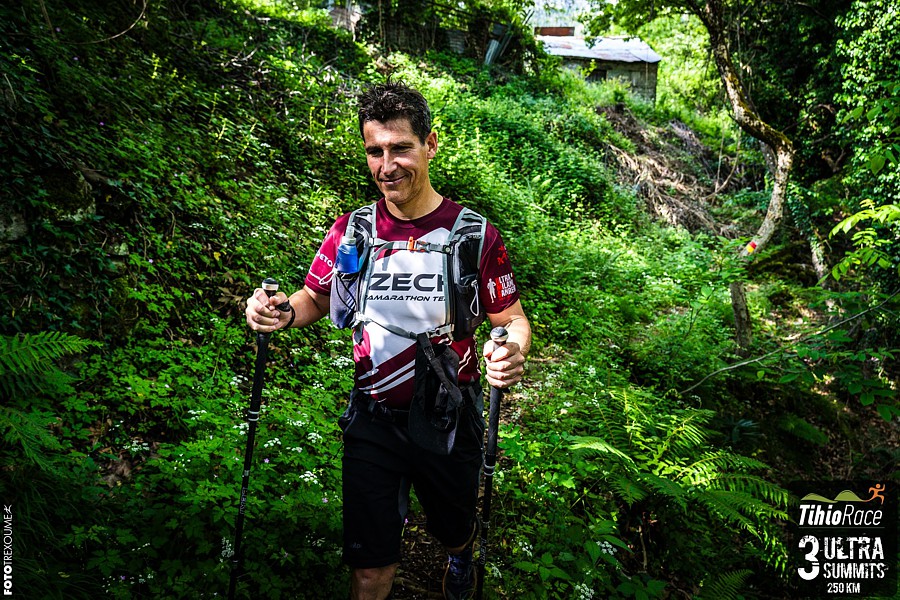
The next milestone is the second Ultra Summit, again at an altitude of about 2,500 meters. Most of the walking is in forest terrain, always a steep ascent and descent. With my technical skills, the descent is not a run, but rather I am careful not to break my legs. Up, again to the out-and-back, it should be about 15 kilometers and an elevation gain of about 1,300 meters. Here and there, the climbing sections annoy me. I slowly feel myself getting tired. I try to prevent problems and do another service, I drink. But I can’t go up. It’s steep, I can see the landscape below me as if it were in the palm of my hand, but I’m not enjoying it. I climb and climb, I hear voices behind me, but when I turn around, there’s no one there. I have to stop a few times and think about how I’m going to get to the second mountain in this condition. On top of that, the weather is starting to turn. Dark clouds and wind are coming. I put on my jacket and hood. Then a couple of colleagues actually catch up with me. I try to keep up with them, but it’s impossible. As I struggle to the crossroads, a volunteer comes down from above to help me—I must look really bad. And he says he has a message for me. Up there, all hell is breaking loose (apparently), so the climb is off. Even though I have almost no water, I don’t get any from him – he says there will be a hut with a spring a few kilometers down.
The subsequent descent, or rather abseiling, doesn’t help me. I’m balancing on the edge of a fall, trying with all my might to stay focused. My legs don’t hurt, but it’s not pleasant. The hut, or refuge from World War II, is down below, it seems close, but of course it’s not that close. However, the rock turns into gravel and it’s more bearable. What’s worse is that heavy rain is starting to fall. I don’t have the strength or space to put on my waterproof pants, so my shorts are completely soaked in no time. My throat is completely dry, so I welcome the hut and the spring where I can replenish my fluids. It’s windy and raining, so I don’t linger and continue on.
The next checkpoint is at a little over a hundred kilometers. I’ve been walking for twenty hours. I grab some snacks. I’ve got another peak to climb, like an interlude before the final ultra peak. But this interlude turns out to be a real challenge. It’s getting dark as I climb. The climb is long and incredibly demanding. I claw my way over roots and rocks, but on the other hand, my legs hold up well. Around three in the morning, I think about taking a break on the trail. I fall asleep during the climb and start talking to trees and rocks. The only thing that saves me from this idea (of sleeping on the trail) is the fact that I don’t want to take my backpack off my back. The descent is no easier. I stumble, sway from side to side, and reach a mental low point. I don’t want to call anyone for a chat at such a nasty time of night. And, as usual, I curse—first at whoever planned this route, and when I run out of words, I curse myself for going on the trail when I hate it. On top of that, thirty hours of wet shoes are starting to take their toll. Various things are happening in there that I don’t want to think about, let alone look at. It doesn’t help when dawn breaks and I’m greeted by a road that takes me to the desired large checkpoint after two kilometers.
I’m in such bad shape that I’m 90% decided to quit. I write a dejected message home and feel embarrassed, but I resist the temptation to hand in my number right away. I’ll get some sleep and see. I make a short live video and, despite my great fears, I take off my socks and go to bed. I tell the checkpoint staff that it will be an hour and a half. There is no blanket, so I basically fall onto the mattress and fall asleep on the fly.
I wake up on my own, five minutes before the alarm clock. My feet are dry and no longer hurt. I feel pretty good. I go back to the common area, where my socks and shoes have been drying on a chair in the meantime—and have contributed to the general stench. I order a pile of pasta with cheese and a Coke and a small beer for strength. I’m in no hurry. I’m thinking about what to do – should I just give up? It’s still more than a hundred kilometers from the finish line, with an elevation gain of about seven kilometers. But after the food and drinks settle and under the influence of my dry socks, I turn on my cell phone and do a live broadcast saying, “I’m going on, because what would I do in a hotel, right?”

The next hill, which is the last ultra peak, is a mere 20 kilometers away, and the next checkpoint is a total of thirty kilometers away, with an elevation gain of 1,600 meters. The weather is good now, but when I look up, it doesn’t look very promising for the summit attempt. The mountains are shrouded in fog, and it looks like it might rain there. The climb is quite steep, alternating between forest and asphalt. The final few kilometers before the turn to the last peak are on the road. Now it’s very windy and drizzling, but the temperature isn’t too bad. Still, I’m wrapped up in my Hurricane jacket. As I expected, the organizer is already waiting at the turn-off, saying that we can’t go up – it’s too dangerous. The route has been moved – 4 kilometers on asphalt and then a few kilometers on a mini ridge to connect to the original route.
The asphalt helps me after all. In the distance, I see a parked car, and according to the information, I should continue on gravel. I even start running a few times to test the condition of my legs. And indeed, there is gravel by the car, but contrary to expectations, it is steeply uphill. It’s some kind of ski resort, the road winds uphill, but at least the weather has improved. The sun even comes out a few times. The mini ridge is pleasant, on clay or grass, and begins to descend towards the second ski slope, whose equipment has seen better days. On the hill in front of me is a cottage, where I suspect the next checkpoint is at 160. And indeed it is, although I almost walk past it because the place seems completely deserted.
I knock on the door and pull the handle. I am greeted by a warm interior, smelling partly of heating oil and partly of food. I order a cola and a pot of spaghetti with cheese.

Fifteen minutes later, I am joined by the trio I surprisingly escaped from on the hill. I don’t stay long because I have a grueling descent to Delphi ahead of me, which is about 17 kilometers away. The first 6 kilometers are off-road, which is another tough test for my trial technique, which I keep proving that I don’t have. Then flat terrain appears. I start running along dirt roads, some of which are muddy. It starts to rain, so I put on my waterproof pants. It stops, so I take them off. When it happens a third time, I give up, and if my shorts get wet, at least my crotch will be nicely cooled. Before the break to descend to Delphi, the road climbs slightly, and I meet a couple of tourists who greet me and ask what I’m doing here. In the forest, I encounter a herd of what I would say is hundreds of goats with a shepherdess and a couple of dogs, who look at me suspiciously. I wait ten minutes for the animals to deign to cross and eat, but then I get bored and walk through the middle of the herd.
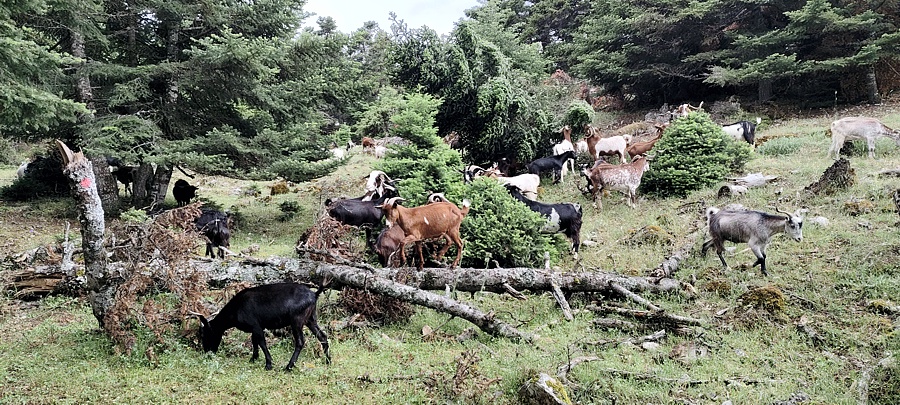
I reach a rocky ridge, beyond which the descent begins. It is a path made of large stones, which I cannot run on. It is not possible to go straight down; the route leads through endless switchbacks. However, I am constantly rewarded for my efforts with beautiful views – the sun has come out and, in addition to Delphi itself and the surrounding mountains, there is also a beautiful view of the sea. The heat takes its toll in the form of sweat and fatigue, but I expect there to be a checkpoint in Delphi – and there isn’t.
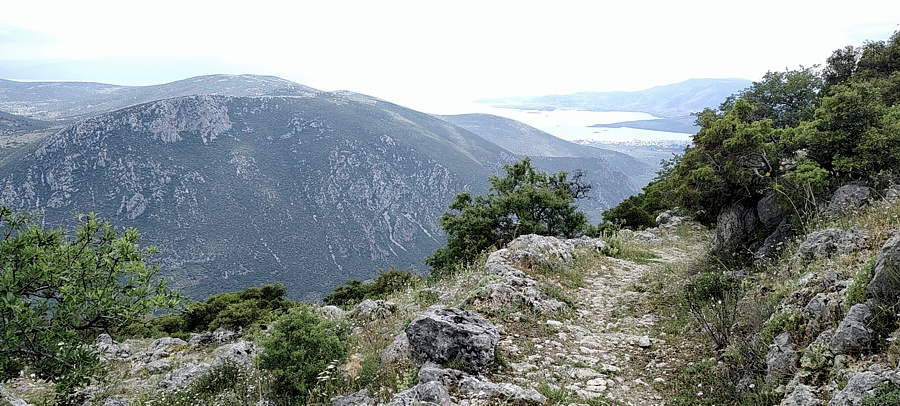
I only have half a liter of water, which is not good. Moreover, from Delphi, the trail continues downhill along a similar path towards endless olive groves, where I suspect there will be no springs. The lack of fluids is very limiting. I try to run, but I don’t want to overdo it, because dehydration in this state is something I don’t need. I call home to chat and forget my troubles (and complain…). It should be added that I am now walking along the road and, according to the map, there should be a small checkpoint without refreshments at the 190th kilometer. Well, maybe they’ll at least have water.
The mobile checkpoint, as indicated by a car parked at the intersection, really comes at the right moment. I’m out of water, and I can’t swallow the cookies from my emergency supply without it. The cold Coke, which I am thrilled to receive, disappears inside me in a matter of seconds. I take some salami from my supplies and grab a large protein bar, which I intend to eat later. I set off along the trail below the road and the railway line, which runs senselessly alongside the normal road in the mowed grass. But it’s a trail race, isn’t it? For hours, I’ve been chasing a group of three colleagues, keeping up with them only because they spend incomparably longer at the checkpoints than I do. At the next station, I plan to take another half-hour nap. To do so, however, I have to climb straight up the rock to the plateau. I can’t believe my eyes when I see where the route leads. One step and I would fall into the abyss. I prefer not to use my poles and crawl on my stomach in some places. My colleagues have run ahead, apparently less afraid than I am. My heart rate reaches unprecedented heights as I reach the top. I start swearing again.
It’s about three kilometers to the station. I trudge along with the prospect of refreshments and a nap. After 51 hours, I have covered 202 kilometers. Ahead of me are the last two peaks, each about 1,500 meters high, supposedly small hills, but higher than the second highest mountain in Czech. In addition, the first hill awaits me as a nighttime mountain test. I lie down at the station, but I can’t get comfortable, it’s too busy. After twenty minutes, I give up, eat something, put on my headlamp, and set off for the next climb, which, according to the organizers, includes the most technical passages of the entire race.
The beginning is fine, but soon everything turns into a nightmare. First, there is a gentle climb with tall grass, rocks, and trees, where, unlike the previous part of the race, the markings are very limited. Navigation is really difficult, I get lost several times, and my watch is not much help because the GPX track is inaccurate and cannot be used for precise guidance. Then comes something I haven’t experienced even in the Ultra Gobi. Not switchbacks, like above Delphi, but straight up the hill, an incredible slope over stones, rocks, and meadows. The markings are not visible, mostly hidden (probably not intentionally). The wind blows through the tall grass, and in the light of my headlamp, it all looks a little scary. What’s more, I can’t see where I’m stepping, so every moment I expect to twist my ankle on a rock.
The climb is interrupted here and there by a path that winds its way up. It’s endless, and just as I’m starting to feel discouraged, the summit appears after two hours. I tell myself that nothing could be worse than this climb. Wrong…
After a few hundred meters, the trail turns onto a slope, where I lose 700 meters of elevation over 3 kilometers. The terrain is so difficult and steep, and the night is so pitch black, that I literally slide down parts of the hill on my butt. I don’t know what to do first, look for the trail markers or watch my feet. I no longer have the mental strength to swear. I reach the bottom as dawn breaks. I take off my headlamp for the last time. I even welcome it when the route leads uphill. In the middle of nowhere, I get lost several times when the GPS disagrees with the markings (which often disappear for long periods of time). Exhausted, I reach the Vraila checkpoint at 221 kilometers. I take off my socks and jump into bed, where I plan to spend 30 minutes, because I was starting to talk to trees and rocks again.
This time, I don’t wake up on my own, but my watch helps me wake up. My socks are still wet, and I don’t want to put them back on. I beg for dry socks (in a fit of generosity, I gave my spare pair to a colleague from France). I don’t yet realize that this is not a good choice. I eat an excellent soup with a mountain of meat, finish my drink, and set off to conquer the last peak. The last thirty kilometers of this epic adventure remain.
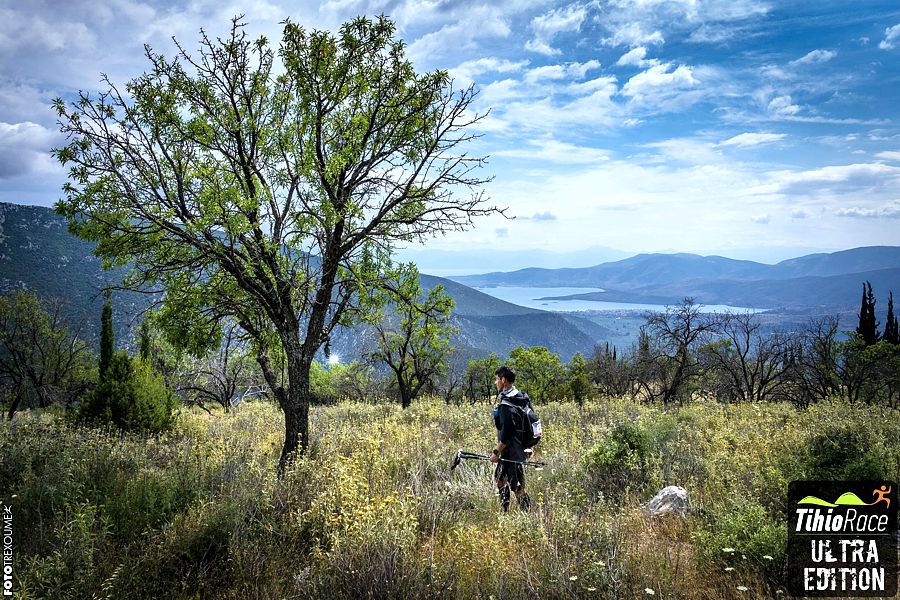
The start on asphalt and the pleasant climb along the trail in a huge valley surrounded by high mountains and a very wild river is extremely enjoyable. Probably also because I can sense the finish line in the distance. However, I still have to be careful because the trail leads high above the river and any wrong step could mean a fall. My Achilles tendon is starting to hurt a little, and when I push harder, I get cramps in my calves. But I’m not going to worry about that anymore. I climb six kilometers to the false summit, which is quite a steep climb. The descent to the saddle before the attack on the real summit is technical and steep. It doesn’t help my mood when a female runner appears behind me. Together, we stumble onto the path that leads to the summit. It turns out that she is running a 100-mile race—and she is in a talkative mood, but I am out of breath. The route now does not follow the path as it “should”, but senselessly across every hill. It’s exhausting. When it looks like we’re at the top, a view opens up a few kilometers ahead with wind turbines, and it’s clear that this will be the summit with the checkpoint. God tries to blow me away when he failed to knock me off the rocks.
When I reach the top, there are only 10 kilometers left to the finish line.
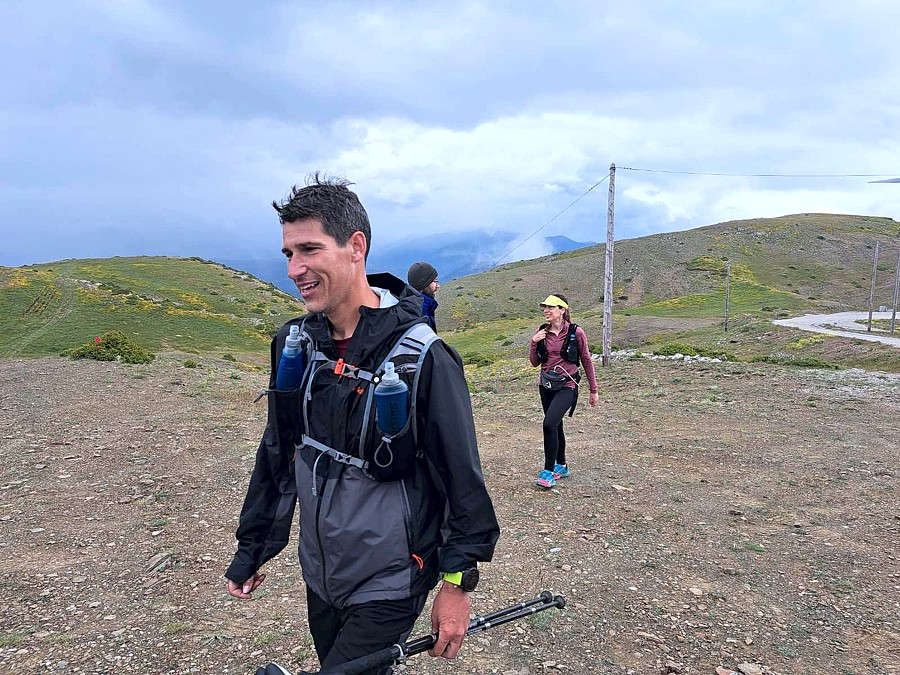
I have a local sweet treat, whose name I don’t remember, but I suspect it contains about a kilo of sugar, and wash it down with a coke. Because it looks like it’s going to rain soon and the terrain is runnable, I quickly dash up first and then finally down towards the finish line. The clouds remain above, the sun’s rays appear, and I can’t even get upset when the pleasant running across the meadows turns into a forest trail. At the end of one such trail, I discover an off-road vehicle, which is the last checkpoint. I am pleased to learn that it is only a few kilometers from here along a dirt road.

Under a blue sky dotted with clouds, I enjoy the last few kilometers, alternating between running and walking, and after 64 hours and 24 minutes, I cross the finish line at the place where I started less than three days ago.


The shower, food, and beer at the finish line are heavenly. What’s more, I find out that I finished in 8th place overall. To be honest, this is a surprise, because everyone ran away from me at the start and I didn’t see any crowds along the way, so I thought I would be at the back. After a few hours at the finish line, I leave for my hotel and fall asleep with an open can of Pilsner.
—
Evaluation: I would rate this race as one of the most demanding I have ever completed. I think it can easily compete with Bigfoot and MOAB in terms of difficulty. Sometimes it was fun, sometimes it wasn’t, but that’s normal in a long ultra. It would be nice to forgive myself for old and repeated mistakes, such as “the more Vaseline, the better,” “spare socks” (and not giving them to anyone), “don’t drink cold drinks on an empty stomach because it can make you sick (arrhythmia),” and so on. I’m not entirely sure, but it’s probably a “once was enough” type of race. And they have it nice there in the mountains…
Acknowledgments: Many thanks to Terka and the children for not letting me give up, as well as to Petr Faldyna, who wrote tirelessly even though I didn’t have the strength to reply. Thanks also to everyone who followed me online and liked and commented on my live broadcasts on Facebook.


For us, the organizers, it’s really interesting to see it from your perspective. Thank you so much for sharing it with us!
Hi Penelopi, thanks for your comment and really amazing (and exhausting) race. It was a next level experience for me as mainly a road ultrarunner. The story may not be accurate, but that is how I remember it from almost 3 days out there.